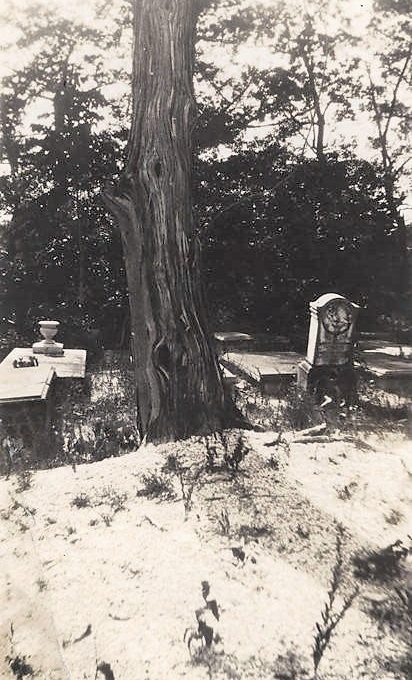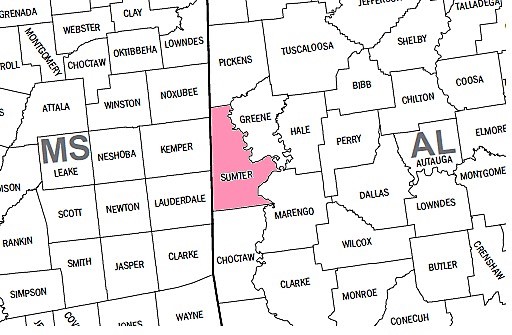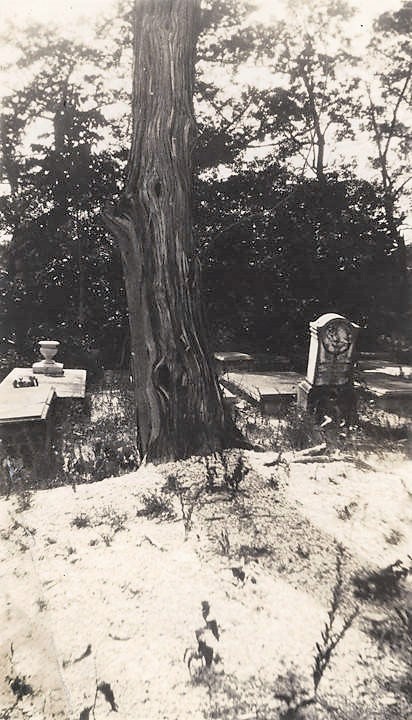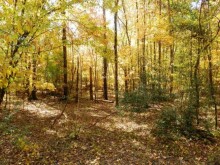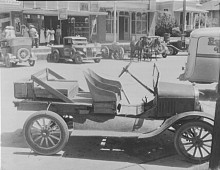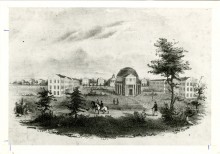(Continued) discusses the Ku Klux Klan
Events in the life of Joe Gillespie born 1853 as told by him in 1939 – Part II
(Transcribed WPA Life story)
JOE GILLESPIE
Belmont, Alabama
by
WPA writer
Ruby Pickens Tartt
written Jan 17, 1939
“Well, let me see now, some other high points. Back in April, 1865, Lee surrendered. Forrest, you know, never surrendered: he just quit fighting, out near Brown’s Station. Well, my father was a union sympathizer so when Colonel Wade, the Yankee General, came to Gainesville to receive the oath of allegiance of Forrest, he asked where he could camp. My father had bought a farm near Gainesville and so he, Wade, was told to put up on Bob Gillespie who was a Union man. Our house was set back in the woods and I remember standing in the door and watching the regiment as they rode in.”
“We had, so my father said, $1500 worth of silver in the house. My mother gathered it up and started to the smokehouse to bury it, in the dirt floor. We also had goblets lined with gold. My father told my mother not to bury the silver, but to bring it back to the porch. He stood the goblets on the shelf. Then he sent one of the Negroes out to gather a bunch of mint. Then my father asked Colonel Wade to have a drink, but first he took a drink himself to show it had no poison in it. Some of the staff took a toddy, then Colonel Wade asked for a place to camp. ‘All right’ my father said, ‘go on down in the woods and help yourself to all the corn in the crib that you and your 500 men want, and you may use the overseer’s house as an office, but there’s just one favor, don’t disturb my Negroes.'”
“My father said Colonel Wade put a guard at each gate to guard the Negro quarters and the house.”
“One of the guards was at the front gate, he looked up at our governess, Mrs. Henshaw, and asked if she didn’t live in Virginia. He had been there and had met her. The soldiers stayed only a night or two, but they used 350 bushels of corn for their horses. Colonel Wade paid for it, however, with the first greenbacks I ever saw.”
“Governor Winston, first native governor of Alabama, was one of our near neighbors, so he, and Mr. Bob McMahon who ran the famous hotel at Gainesville, and Mr. Tom Long took my father up to Gainesville to see them sign the oath of allegiance. They met in the American hotel. There was a big hall running the length of the house with rooms on either side. In the last room on one side were Wade, Forrest, and Stephen E. Lee, a nephew of Gen. Robert E. Lee. Forrest signed first, and got up and went out of doors where a soldier was holding his big black horse. He slung his leg over the horse and said ‘That was the damndest, bitterest pill I ever had to swallow.’ Later on he was made High Cyclops of the Ku Klux Klan. He didn’t take part so far as I ever heard but he directed Steve Renfroe later, the famous out-law was head of it in Sumter County and he was needed. In those days Renfroe was a highly respected man.”
“About the first thing that I remember about the Ku Klux Klan was the killing of Billingsly who came down from the North and settled about 13 miles west of Livingston near what is known as Payneville. He boasted to the Negroes that if he was made Judge he would take the land from the whites and give it to the Negroes, hoping to get their votes. After a speech to the Negroes near Parker’s Switch he and his horse were both shot and killed while on the way home. Renfroe was accused of doing this to prevent Billingsly voting on a member of congress at the next election in November.”
“Then there was Tom Ivey, the Negro mail clerk, who had been appointed when a very capable white clerk by the name of Ed McAlpine was fired. Tom Ivey, the Negro, was already under indictment for violating the election law. A large band of Ku Klux met down near the station, flagged the train and then when Ivey poked his head out of the door they filled him full of shot. Bill Hart, living at Moscow, was one of them.”
“Those were terrible times. About 1870 down here in Belmont a man named Collins was shot in the leg by a Negro. The citizens were afraid of a Negro mob so they sent out couriers asking for help.”
“There were two plantations near by in the river swamp with lots of Negroes on them and they were what the community feared. Collins got out a party and went to one of the houses. He opened the gate and a rapid fire was opened up on them by Negroes in ambush. Collins was killed instantly. The Negroes continued to fire so the whites had to retire leaving Collins body to the enemy. The next day a large party collected at Belmont to recover the body, but the Negroes refused to give it up saying the white people would have to fight for it if they got it.”
“Armed parties of men were continually passing back and forth all day from Livingston to Belmont, and commissary wagons with haversacks hung to the horns of their saddles. Finally the Sheriff was allowed to get Collins’ body but the Negroes kept his effects, money, arms and all as captured property. It was said white people were seen in the enemy’s lines so this made Belmont people believe the Negroes were being led and directed by them. The trouble started by a fight between a man named Jones, of Demopolis, and McBride at a political pow-wow at Belmont in which Jones got badly whipped. The Negroes sided with Jones. They were hostile toward the whites, and threatened to burn the town if any one else interfered with their meetings.”
Old cedar tree under which Governor John A. Winston of Alabama is buried beside his father. ca 1930s – Sumter County (Alabama Department of Archives and History)
“Then the Negroes armed themselves with guns and marched from Belmont to Livingston to a Republican Convention, but there was no trouble as I recall.”
“I remember Bill Jones perfectly. He had gone through the Southern army a loyal soldier. Then he turned scalawag. I went down to see him one morning around ten or eleven o’clock and I found him in his garden. Mayor McBride arrived in his buggy about the same time. First thing I knew Jones pulled the Mayor out of his buggy and beat him up. The doctor thought he was headed for Demopolis but the Negroes said he was going toward McDowell. When Jones got to the ferry, McBride, Joe Flowers and Billy McCormick caught up with him and put a load of buckshot through his buggy. Jones went down on his knees in the buggy and got to the other side safely. He was never heard of any more.”
“Then there was a posse of about forty armed men from Belmont, and Moscow, armed and disguised, who made their appearance in Livingston and went to the house of the famous Dr. Choutteau, who was no friend of the whites and was causing trouble among the Negroes. One of the men ripped a board off the house and stuck his hand in, and Coblentz, who was guarding Choutteau, blew his brains out. Coblentz was then shot by the attacking party and killed. Dr. Choutteau escaped and left this part of the country and was never seen any more.”
(Continued in Part III)
Alabama Footprints Confrontation is a collection of lost and forgotten stories that reveals why and how the confrontation between the Native American population and settlers developed into the Creek-Indian War as well as stories of the bravery and heroism of participants from both sides.
Some stores include:
- Tecumseh Causes Earthquake
- Terrified Settlers Abandon Farms
- Survivor Stories From Fort Mims Massacre
- Hillabee Massacre
- Threat of Starvation Men Turn To Mutiny


